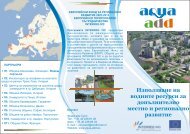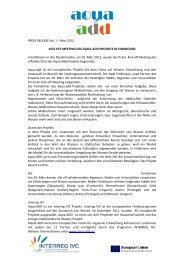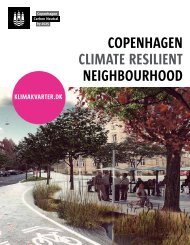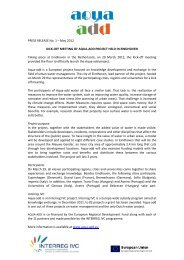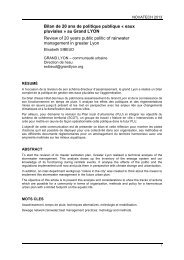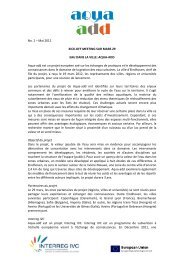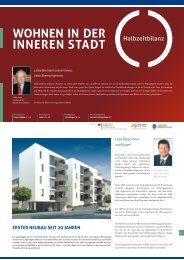La gestion intégrée des eaux pluviales - AQUA-ADD Interreg IVC ...
La gestion intégrée des eaux pluviales - AQUA-ADD Interreg IVC ...
La gestion intégrée des eaux pluviales - AQUA-ADD Interreg IVC ...
You also want an ePaper? Increase the reach of your titles
YUMPU automatically turns print PDFs into web optimized ePapers that Google loves.
3<br />
Urban<br />
rainwater<br />
A resource<br />
to be used<br />
Place doctors Mérieux<br />
Lyon<br />
Regarded as a random phenomenon and a constraint to be<br />
managed, urban rainwater has historically been managed<br />
separately from other elements in the urban water cycle.<br />
This approach is today reaching its limits and, in parallel,<br />
we have become aware of the rich resource which rainwater<br />
could represent. Refreshment for the city, irrigation of planted<br />
landscaped spaces, climatisation of buildings with green<br />
roofs ... It can be used in many ways, but new approaches<br />
are called for.<br />
Moving beyond exclusively technical responses<br />
With the urban development of the past few deca<strong>des</strong>, the soil<br />
of the agglomeration has become increasingly less permeable,<br />
and now no longer allows sufficient percolation of rainwater<br />
into the water table. The challenge facing us today and tomorrow<br />
consists of favouring the re-infiltration of this water into the<br />
subsoil, limiting the flood risk, and supplying and conserving<br />
the agglomeration’s water resources.<br />
Adapting to the territory<br />
To be effective, these systems need to take account of the reality<br />
in the territories. The topography, hydrology and geology can<br />
help us to find innovative solutions. Thus, Grand Lyon has<br />
3 sectors. The dense urban centre has a highly developed<br />
combined sewer network which can be optimised. In West<br />
Lyon, with its poorly infiltrating rocky land, a separate network<br />
needs to be developed with rainwater being discharged into<br />
its streams. Lying on permeable land without a hydrographical<br />
network, East Lyon allows rainwater to percolate into the land.<br />
The “Development and Rainwater” gui<strong>des</strong> and the reference work<br />
for the <strong>des</strong>ign and management of public spaces<br />
Grand Lyon has developed tools to help planners integrate rainwater<br />
management from the <strong>des</strong>ign stage of a project. The “Development<br />
and Rainwater” gui<strong>des</strong> explain the management rules and the<br />
procedures to be followed. The reference work on the “Design<br />
and Management of Public Spaces” specifies the highway <strong>des</strong>ign<br />
rules, and the types of materials for public spaces or other<br />
developments. In producing these tools, Grand Lyon wished<br />
to encourage the various tra<strong>des</strong> to work in complete synergy,<br />
in order to move towards an integrated rainwater management.<br />
The gui<strong>des</strong> and the reference work can be found<br />
on Grand Lyon’s website: grandlyon.com<br />
A votre service > Eau et assainissement > Gestion <strong>des</strong> <strong>eaux</strong> <strong>pluviales</strong><br />
Working on the transversality of services<br />
In every development project undertaken in its territory,<br />
Grand Lyon’s Water Department works in close collaboration<br />
with Grand Lyon’s Highways, Urban Design and Sanitation<br />
Departments, and likewise all the other parties involved<br />
in the development. By jointly considering the issues of water,<br />
air, noise, climate, well-being and economic development,<br />
they put in place sustainable solutions, arising from the synergy<br />
of all their skills.




